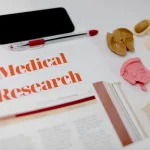Employment communication is a critical skill for anyone navigating the modern job market. It involves effectively presenting your qualifications, experience, and personality to potential employers through various mediums, such as resumes, cover letters, and interviews. In Chapter 5 of BUSI 3660, students learn how to create compelling job application materials and excel during interviews, ensuring they stand out in a competitive hiring landscape.
In this guide, we will delve deep into the core components of employment communication, breaking down the strategies and tools you need to succeed. Whether you’re drafting your first resume or preparing for a career-changing interview, these insights will guide you every step of the way.
The Essentials of Employment Communication
The job application process is not just about submitting documents; it’s about telling a cohesive story that aligns with the employer’s needs. Every piece of your application—from your resume to your interview responses—should work together to showcase your value.
BUSI 3660 Chapter 5 introduces the concept of a “Job Application Package”, which typically consists of three primary components:
- Resume: A concise, one- to two-page summary of your professional background.
- Cover Letter: A personalized letter that explains your interest in the role and highlights your qualifications.
- Interview Preparation: The strategies and skills needed to effectively present yourself in person or virtually.
Each of these elements requires careful attention to detail and customization. Employers receive dozens, if not hundreds, of applications for each position, so making a memorable first impression is crucial.
Building a Professional Resume
A resume is your personal marketing document. It’s often the first thing recruiters see, so it needs to make a strong impact within seconds. Chapter 5 emphasizes the importance of structure, clarity, and relevance when crafting a resume.
1. Key Components of a Resume
Every resume should include the following sections:
|
Section |
Purpose |
Tips for Optimization |
|
Contact Information |
Provides your details for employers to reach you. |
Include phone, email, and LinkedIn profile. |
|
Professional Summary |
Introduces your career goals and top skills. |
Tailor it to match the job description. |
|
Work Experience |
Details relevant roles and accomplishments. |
Use action verbs like “achieved” and “led.” |
|
Education |
Highlights academic credentials. |
Include GPA (if above 3.0) and honors. |
|
Skills |
Lists technical and soft skills. |
Prioritize job-relevant skills. |
2. Tips for a Winning Resume
A strong resume doesn’t just list your qualifications; it presents them in a way that aligns with the employer’s needs. Here are some additional tips to enhance your resume:
- Quantify Achievements: Instead of vague statements like “managed a team,” specify your impact. For example, write “managed a team of 10 and increased productivity by 15%.”
- Action-Oriented Language: Use strong action verbs, such as “developed,” “led,” “initiated,” and “achieved,” to describe your accomplishments.
- Keep it Relevant: Only include experiences and skills that directly relate to the position you’re applying for. This keeps your resume concise and focused.
Crafting a Strong Cover Letter
Your cover letter is your chance to add personality to your application. While your resume lists your qualifications, the cover letter explains why you’re passionate about the role and how you can contribute to the company.
Why a Cover Letter Matters
Many applicants skip the cover letter, assuming it’s optional. However, Chapter 5 stresses that a well-crafted cover letter can set you apart from other candidates. It allows you to address the hiring manager directly, demonstrate your understanding of the company, and explain why you’re the best fit for the role.
Structuring Your Cover Letter
- Opening Paragraph: Start by mentioning the position you’re applying for and how you discovered the job opportunity. For example, “I am excited to apply for the Marketing Coordinator role at [Company Name], as advertised on [Job Board].”
- Middle Paragraphs: Highlight your skills and experiences that match the job description. Be specific—mention projects or achievements that demonstrate your capabilities.
- Closing Paragraph: Reaffirm your interest in the role and express your eagerness to contribute to the company. End by suggesting a follow-up action, such as discussing your application in an interview.
Acing the Job Interview
The interview is often the most intimidating part of the job application process, but it doesn’t have to be. Chapter 5 provides practical advice to help you prepare and present yourself confidently.
Before the Interview
Preparation is key to reducing anxiety and increasing your chances of success.
- Research the Company: Understand its mission, culture, and recent developments. This knowledge will help you tailor your answers and show genuine interest in the role.
- Practice Your Responses: Rehearse answers to common questions, such as “What are your strengths and weaknesses?” and “Why do you want to work here?”
- Prepare Questions to Ask: Asking thoughtful questions during the interview shows that you’re engaged and eager to learn more about the company.
During the Interview
During the interview, your communication style and body language matter as much as your words.
- First Impressions Count: Arrive early, dress professionally, and greet everyone you meet with a smile.
- Non-Verbal Communication: Maintain eye contact, sit up straight, and use natural hand gestures to convey confidence.
- Answer Strategically: Use the STAR method (Situation, Task, Action, Result) to structure your answers to behavioral questions.
After the Interview
The steps you take after the interview are just as important as the interview itself.
- Send a Thank-You Email: Within 24 hours, send a personalized thank-you note to the interviewer, reiterating your interest in the position.
- Reflect on Your Performance: Consider what went well and what could be improved for future interviews.
Avoiding Common Mistakes
Even the most qualified candidates can make mistakes that hurt their chances. Chapter 5 highlights common pitfalls, such as:
- Generic Applications: Customizing your resume and cover letter for each job is essential. Generic applications show a lack of effort and attention to detail.
- Poor Grammar or Spelling: Even minor errors can create a negative impression. Always proofread your materials.
- Ignoring Online Presence: Recruiters often review LinkedIn profiles, so ensure yours is updated and professional.
Conclusion
Chapter 5 of BUSI 3660 provides invaluable guidance on creating a compelling job application package and excelling during interviews. By mastering the art of employment communication, you can confidently present yourself as the ideal candidate.
Success in today’s job market requires more than qualifications; it demands a strategic approach to communication. Whether it’s crafting a tailored resume, writing a persuasive cover letter, or acing an interview, every step matters. Begin applying these insights today to take control of your career journey.
Frequently Asked Questions (FAQs)
What is the STAR method in interviews?
The STAR method stands for Situation, Task, Action, and Result. It helps you structure clear and specific answers to behavioral questions.
How can I tailor my resume to a job?
Match keywords from the job description and emphasize experiences relevant to the role.
Why is a cover letter important?
A cover letter personalizes your application, allowing you to express enthusiasm and highlight how your skills align with the job.
What should I include in my professional summary?
Focus on your career goals, key accomplishments, and top skills related to the job.
How soon should I send a thank-you email after an interview?
Send a thank-you email within 24 hours to express gratitude and reaffirm your interest.
What are common mistakes in job applications?
Mistakes include generic applications, grammar errors, and lack of preparation for interviews.





